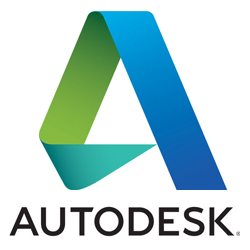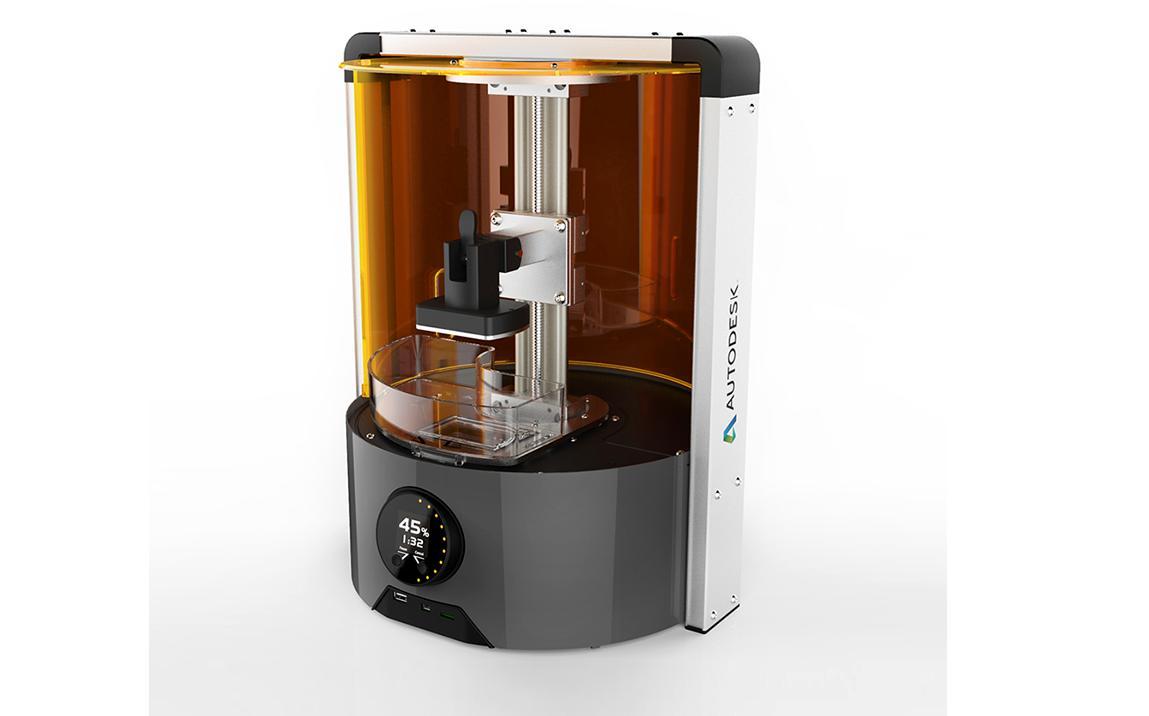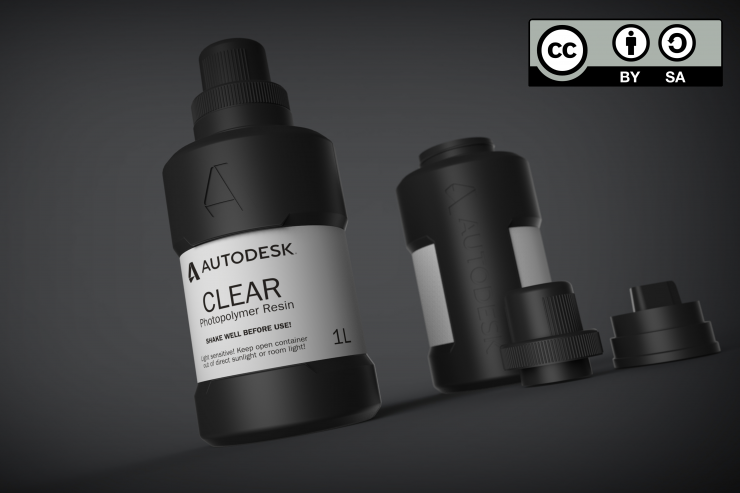Autodesk Open Sources Their 3D Printer Resin – Providing Recipe to All & Opening the Door to New Materials
 Open source technology is what brought the desktop 3D printer space to where it is now. If it weren’t for groups such as RepRap, who really encouraged the sharing of open source files for building 3D printers, most of the desktop 3D printer manufacturers that exist today probably would never have come about. The open sourcing of files and designs take the idea of filing for patents and instead approaches the market from a totally different perspective. As an individual inventor, on one hand, this means allowing anyone to use your inventions and innovations without having to compensate you monetarily. On the other hand, it allows for the quick dissemination of those ideas. This typically leads to a faster adoption rate, and a massive amount of iteration on behalf of those ideas and creations.
Open source technology is what brought the desktop 3D printer space to where it is now. If it weren’t for groups such as RepRap, who really encouraged the sharing of open source files for building 3D printers, most of the desktop 3D printer manufacturers that exist today probably would never have come about. The open sourcing of files and designs take the idea of filing for patents and instead approaches the market from a totally different perspective. As an individual inventor, on one hand, this means allowing anyone to use your inventions and innovations without having to compensate you monetarily. On the other hand, it allows for the quick dissemination of those ideas. This typically leads to a faster adoption rate, and a massive amount of iteration on behalf of those ideas and creations.
Recently, Autodesk announced that they had begun taking orders for their open source stereolithographic 3D printer, the Ember. The printer, which is priced at $5995, aims to help advance desktop 3D printing as a whole. Autodesk doesn’t appear to have their sights set on profiting off of the sale of these machines, but they instead are focused on trying to make 3D printing accessible and useful to the masses. In turn, this could create a large demand for their 3D modeling software, thus bringing in revenues indirectly.
Today, Andreas Bastian, 3D Printing Research Scientist at Autodesk, has informed 3DPrint.com that the company has also just open sourced their 3D printer resin.
“We just published Ember’s standard prototyping resin’s formulation this morning under a CC-BY-SA license,” Bastian tells 3DPrint.com.
The resin is called PR48, and it stands for “Polar Resin Number 48”. It is the company’s 48th try at creating a polar resin, and apparently they are satisfied enough with its performance that they are choosing it as the first resin in which they elect to open source, thus sharing the formulation under a Creative Commons Attribution-ShareAlike license.
“We’re explicitly inviting you to understand, remix, and remake our resin,” writes Eric J. Wilhelm, Head of Autodesk’s hardware group. “PR48 will soon be for sale on our site. Buying it from us will probably be the easiest way to get more, but if you want to make your own for any reason you can do so. Open sourcing our resin formulation is only the first step in the journey of opening our 3D printer and our Spark 3D printing platform.”
So here it is, the official recipe for the Autodesk Ember PR48 Resin (percentages are wt/wt):
- Photoinitiator: 2,4,6-Trimethylbenzoyl-diphenyl-phosphineoxide (TPO) 0.40%
- UV blocker: 2,2’-(2,5-thiophenediyl)bis(5-tert-butylbenzoxazole) (OB+) 0.16 %
- Reactive diluent: Genomer 1122 19.89%
- Oligomer: Ebecryl 8210 39.78%, Sartomer SR 494 39.77%
 This is really quite a significant announcement, even though to some it may seem dull and boring. The open sourcing of Autodesk’s PR48 resin is just the start of what should be an interesting year ahead for the 3D printing space. The fact that anyone can now mix their own resins, given that they can acquire the correct chemicals, means that just about anyone also has the ability to iterate upon the material, in hopes of bringing even more material options to the 3D printing space in the coming weeks, months and years ahead. It also could eventually lead to the drastic reduction in price for photosensitive resins as new companies now will have the blueprints to begin producing these materials.
This is really quite a significant announcement, even though to some it may seem dull and boring. The open sourcing of Autodesk’s PR48 resin is just the start of what should be an interesting year ahead for the 3D printing space. The fact that anyone can now mix their own resins, given that they can acquire the correct chemicals, means that just about anyone also has the ability to iterate upon the material, in hopes of bringing even more material options to the 3D printing space in the coming weeks, months and years ahead. It also could eventually lead to the drastic reduction in price for photosensitive resins as new companies now will have the blueprints to begin producing these materials.
Autodesk is sure to point out that PR48 is intended for professional use only, and that working with the formula is done at your own risk. PR48 should work well for most prints. It adheres to the build head nicely, clouds the Ember’s PDMS window less than other resins, and photopolymerizes at a “resonable rate”.
I personally am looking forward to seeing how quickly 3D printer resins begin improving, thanks to the open sourcing of this material by Autodesk. It’ll also be interesting to see how many other formulas are released for other resins in the coming months ahead. What do you think about Autodesk’s initiative to open source not only their Ember 3D printer and Spark platform, but their resins as well? Discuss in the Autodesk Open Source Resin forum thread on 3DPB.com.
Subscribe to Our Email Newsletter
Stay up-to-date on all the latest news from the 3D printing industry and receive information and offers from third party vendors.
You May Also Like
Nano Dimension Expands Micro-Manufacturing with Exa 250vx 3D Printer
As it continues to push for the acquisitions of Desktop Metal and Markforged, Nano Dimension has introduced a new micro-3D printing system at Formnext. Adding to the Fabrica Tera and...
3D Systems Pushes New Tech and Partnerships at Formnext
As one of the pioneering companies in additive manufacturing (AM), 3D Systems remains a key player to watch at Formnext 2024, where it is showcasing major partnerships, innovative technologies, and...
Formnext 2024 Roundup: Pellet 3D Printing, Advanced Software, & More
Europe’s leading additive manufacturing trade show, Formenxt 2024, comes to a close today. There have been many product, material, software, and other business announcements during the event, and we’ll summarize...
Formnext 2024: Worldwide Release of Meltio Engine Blue Robotic Arm Integration Kit
Formnext 2024 is currently taking place in Frankfurt, and as you would imagine, the announcements of new machines, materials, software, and more have been flying fast and furiously into our inboxes....




































